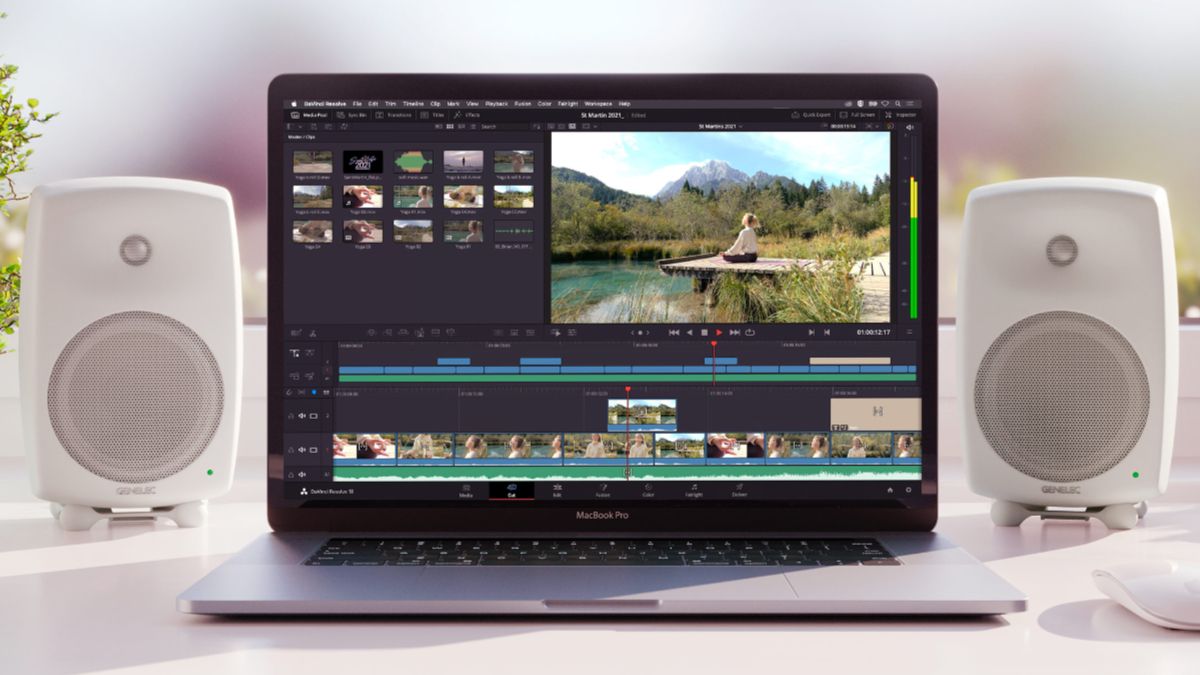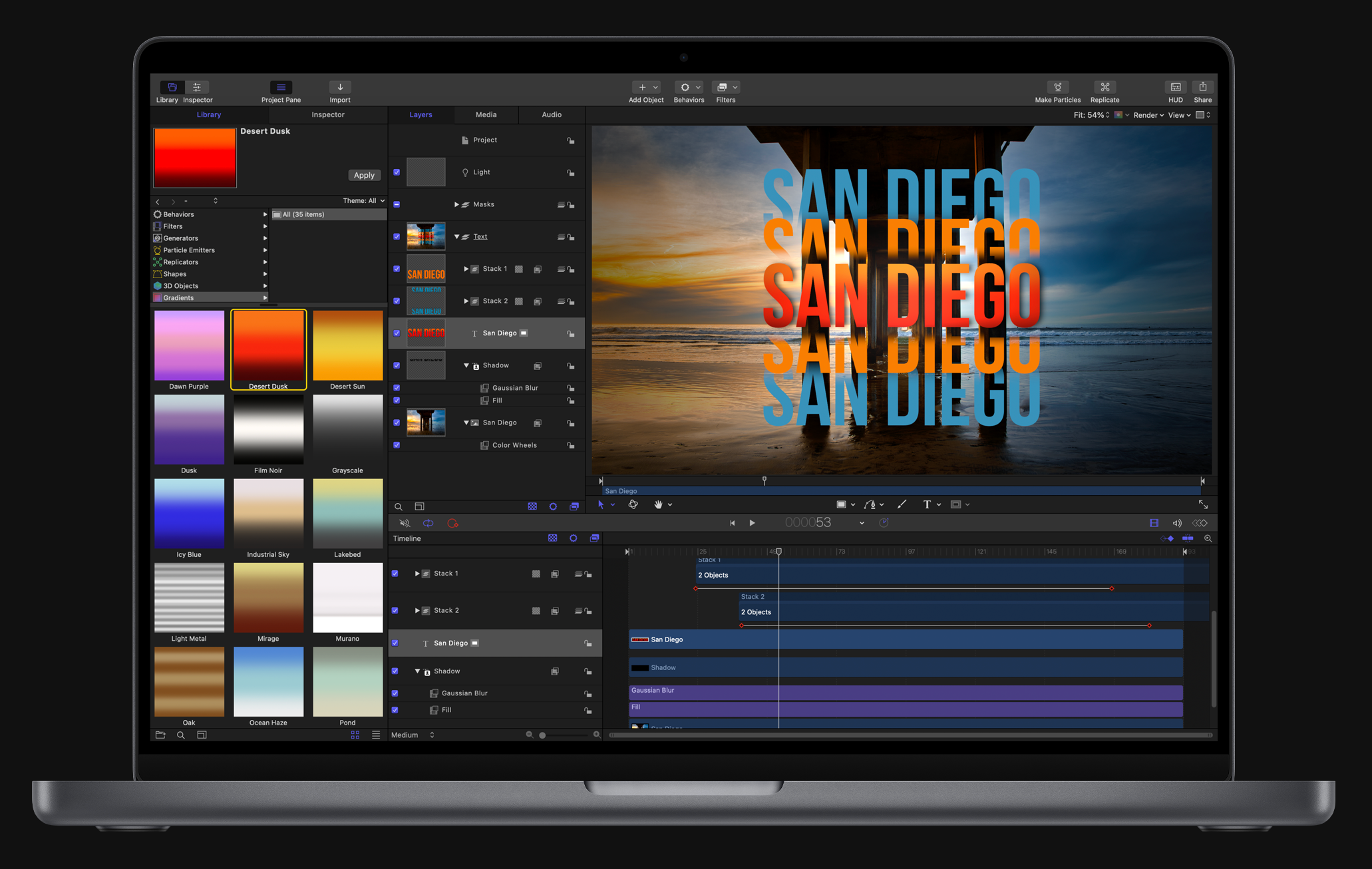Dying to escape Adobe’s subscription model? You don’t need to pay hundreds of dollars a year to use top-quality creative software anymore. Try these alternatives and buy outright (or create for free) instead.
Affinity Photo by Serif has been a viable Photoshop alternative for a long time now, and it’s only getting better. With a layout that’s familiar to anyone who’s opened Adobe’s image editor in the last decade, Affinity Photo is a fully-featured editor, retoucher, and image manipulator that you can buy to own.
The app is available for both Mac and Windows, and it performs excellently even when opening giant image files. Though it’s not a complete match for Photoshop, all the basics are covered with layers, image adjustments, masks, retouching tools like dodge and burn, a brush library with support for custom brushes, and more.
You can also use Affinity Photo as a RAW image editor, though it’s not built for editing large numbers of files at once and there’s nothing in the way of image management (as per Adobe Bridge). It includes familiar adjustment parameters, custom presets, and lens corrections for most glass on the market.
Affinity Photo retails for $70, though you might get a better deal at certain times of the year. For your money, you get a license that’s good for the current version of the app, which includes ongoing software updates. Serif offers a discounted upgrade path when moving on to the next major versions of its apps, too.
Also consider: If Affinity Photo doesn’t cut it, try Pixelmator Pro instead. This Mac-only image editor costs $50 and includes support for vector graphics, machine learning-powered editing, and fast photo edits.
Want a free alternative? If your budget is $0, you can’t get much better than open-source darling GIMP. Available on practically every operating system (even Windows on ARM), GIMP brings image manipulation to the masses at no cost.
Best Premiere Pro Alternative: DaVinci Resolve
It’s no secret that the best free video editor is DaVinci Resolve. This makes it a great alternative to Premiere Pro because you can fully immerse yourself in the app without spending a penny. You can use the video editor for months or years to learn its intricacies and find out if it’s right for you without being limited to a 30-day trial.
DaVinci Resolve separates its various features into tabulated workspaces and includes two editing interfaces (Cut for fast edits, and Edit for more involved projects). There’s a powerful multi-camera editing workflow, signature color correction tools for applying specific styles to your footage, one-click operations to speed up processes like syncing external audio, and the ability to publish directly to platforms like YouTube and Instagram.
But there are limitations in the free version and Blackmagic Design charges $295 for the Studio version of DaVinci Resolve. For your investment you can unlock the full package including features like proper 10-bit HDR export, higher than 4K and 60 frames per second output, the DaVinci Neural Engine for better machine learning performance, and Blackmagic Design’s Resolve FX which includes a vastly expanded library of effects.
Also Consider:Final Cut Pro is a Mac (and iPad) video editor that’s got the same professional appeal as Premiere Pro at a steep price tag of $300, with no ongoing subscription. It’s highly optimized for Apple hardware and surprisingly easy to get along with. Windows users might want to take a look at Luxea Pro for a mid-range DaVinci Resolve alternative.
Want another free alternative? DaVinci Resolve is already free, but so is iMovie and it’s incredibly easy to use. If you don’t have a Mac, Shotcut is an actively maintained open-source video editor that’s worth a look too.
Serif has also stamped its mark on the design space with vector image tool Affinity Designer, offering a real alternative to Adobe Illustrator at a far more palatable $70. Like Affinity Photo, there’s an upgrade path for moving on to the next major version and you get all updates to the current version included in the price.
There are native Mac and Windows versions of Designer available, plus a six-month free trial (at the time of writing). The tool is ideal for creating vector images you can use anywhere from t-shirts to business cards, for mocking up user interfaces and websites, game and product design, flyers and other printed objects, and more.
Designer includes handy tools like pixel previews to see how objects look at different pixel densities and resolutions, support for artboards, and a cheaper iPad version that lets you work on designs on the go and then pick them up when you get back to your desk.
Also consider:CorelDRAW is one of the few design tools still offering a perpetual license, but it’ll cost you a one-off fee of $550.
Want a free alternative? Don’t pass on Inkscape if you’re looking for a free vector-based design tool that’s available virtually anywhere. You can also try out Boxy SVG, a web-based design tool that works in your browser but is limited to SVG file support.
In case it wasn’t obvious by now, Serif is leaning hard into creating a suite of Adobe alternatives that reject the notion of a subscription-based model. InDesign is Adobe’s industry-standard publishing suite, and Affinity Publisher is Serif’s answer. The tool is designed for creating simple or complex layouts for both print and digital publications.
It’s perfect for designing books, magazines, leaflets, or even resumés that stand out from the crowd. Like the rest of the Affinity suite, Publisher works with both Mac and Windows platforms and retails for a $70 one-off fee with a generous free trial available.
Like any creative software, the better you get to know Publisher the more you will get out of it. The basic tools on offer make it possible to design engaging layouts and work with both raster and vector images, as well as native document formats from apps like Photoshop and Affinity Photo.
You can even merge text and images from other documents, including spreadsheets and databases to automate the process of creating and delivering documents like certificates, letters, envelopes, identity badges, and more.
Also consider:QuarkXPress has been an industry-standard tool since the late 80s, and it’s still going strong (but it’ll cost you at $700). Swift Publisher is a great budget choice if you have a Mac, at only $20.
Want a free alternative?Scribus is the go-to open-source publishing app. It’s actively maintained, completely free, and available on virtually every platform.
After Effects is hard to replace, having carved out its own niche and a dedicated following over decades. Final Cut Pro Motion might be the closest alternative if you’re in search of professional-level motion graphics for your next project, but it comes with some strings attached.
Though Motion is a $50 tool, it depends on FinalCut Pro which means you’ll need to spend $300 on Apple’s professional video editor first. You’ll also need to learn how to use FinalCut Pro, stick with it long enough to see the sense in adding Motion to your tool set, and you’ll need a Mac since FinalCut Pro is only available on Apple hardware.
That said, Motion is a powerful tool that is arguably a lot easier to use than After Effects. Its feature set includes sophisticated title authoring, object tracking, animations that don’t rely on keyframes, particle effects like smoke and steam, and the ability to work with 3D materials (and even convert 2D to 3D).
Also consider:DaVinci Resolve has a motion graphic workflow (Fusion) that requires some learning but can also be used in much the same way as After Effects, and it works on both Windows and Mac.
Want a free alternative? DaVinci Resolve is free, but so too is open-source tool Natron. It’s a surprisingly sophisticated tool given its humble roots, and there are Windows, Mac, Linux, and BSD versions available.
Best Lightroom/Camera RAW Alternative: DxO PhotoLab
DxO PhotoLab is a pure photo editor that should be able to replace Adobe Lightroom outright. The app is available for both Windows and Mac and includes powerful photo management features to make the entire editing workflow easy to manage.
Tag, rate, and pick your favorite images, then edit them with PhotoLab’s adjustment tools. You can apply LUTs to your images for instant edits, make use of some of the best lens correction features in the business, and apply high-quality noise reduction effects before it’s time to export.
PhotoLab also includes the ability to make localized adjustments to small parts of your image, an essential tool in any photo editing suite. Unlike Lightroom or Photoshop Camera RAW, PhotoLab is available as a perpetual license for a one-off fee of $229 (with a 30-day trial).
Also consider:Skylum Luminar is another Lightroom alternative with a perpetual license available at $299 (though it’s often discounted). For smaller individual edits, Affinity Photo has a quality RAW editor and some great touchup tools.
Want a free alternative? If you want a completely free editor then take a look at RawTherapee, a full-blown RAW photo editor that’s available for Linux, Windows, and Mac. Many built-in photo editors (like Apple Photos) are also capable of editing RAW images.
We’ve chosen to pick only tools that offer buy-to-own licenses here, but there are others available that use a similar subscription model to Adobe.
If you’re wondering where to start with creative projects, try starting with open-source software like GIMP, Inkscape, and RawTherapee before reaching for your wallet.






